Art World
To Mark the 100th Anniversary of the Tulsa Race Massacre, Dozens of Artists Are Installing Public Works Around the City
Street artist Tatyana Fazlalizadeh is among those paying tribute to the tragedy in Oklahoma.
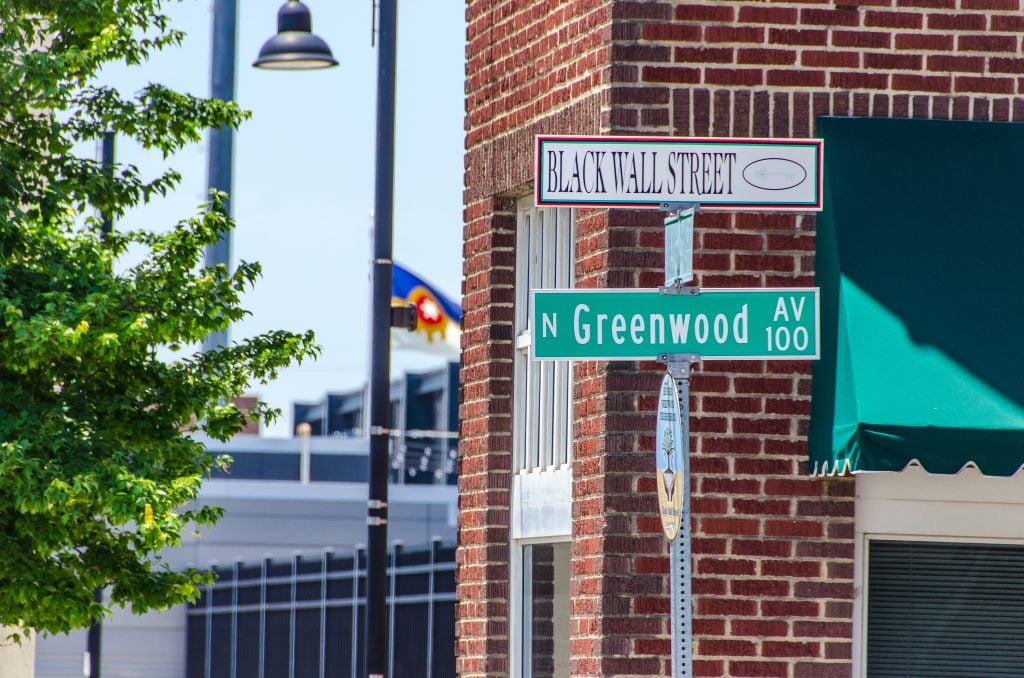
Street artist Tatyana Fazlalizadeh is among those paying tribute to the tragedy in Oklahoma.

Sarah Cascone

Monday marks the 100th anniversary of the deadly Tulsa Race Massacre of 1921, which saw white mobs burn the city’s prosperous Greenwood neighborhood, known as Black Wall Street, to the ground. To memorialize the tragedy, more than 30 local artists have joined together for the Greenwood Art Project, a citywide public art installation that tells the story of Greenwood’s rise and fall, and celebrates the community’s resiliency over the past century.
The events left an estimated 300 Black Tulsans dead and 10,000 more homeless. There was also up to $200 million in property damage in today’s dollars.
“For generations, the worst event in Tulsa history wasn’t spoken about in public,” said Tulsa Mayor G.T. Bynum in a statement. “Today, artists are helping to educate and inform people all around the world about this tragedy—and by doing so honor the memory of our neighbors who were lost.”
The project has been organized by artists Rick Lowe and William Cordova as part of Oklahoma’s Tulsa Race Massacre Commission, founded in 2017 to prepare for the massacre’s centenary. (The commission is also opening a new history museum and memorial, Greenwood Rising, in July.)
Originally, the commission had approached Lowe, who is from Houston, to ask him to make a commemorative public artwork. But it soon became clear that he wanted to take a different approach.
“I realized I don’t need to do that,” Lowe told Artnet News. “There are people who are descendants [of the victims] and they have very real stories that they need to tell.”
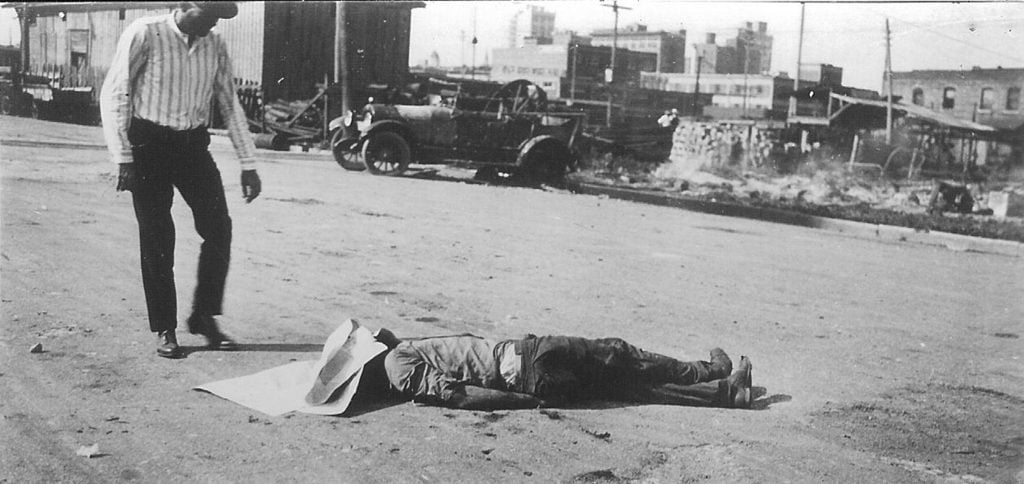
The body of an unidentified black victim of the Tulsa Race Massacre lies in the street as a white man stands over him, Tulsa, Oklahoma, June 1, 1921. Photo by Greenwood Cultural Center/Getty Images.
Lowe and Cordova opened up the project beyond traditional artists to incorporate projects from the likes of 93-year-old Maybelle Wallace and L. Joi McCondichie, who grew up hearing her mother recount her experience fleeing Tulsa on foot to escape the violence.
McCondichie “wanted to do a 2021 centennial walk, so we worked with her to frame it as an artistic procession,” Lowe said.
The Tulsa community is invited to trace the path along the rail line that McCondichie’s mother, and many other Black people, took out of the city on June 1.
For her piece Darktown Strutters’ Ball, Wallace staged a dance earlier this month, enlisting actors to join the festivities playing the roles of 1921 Greenwood residents enjoying a night off.
“She told us, ‘this is a time to commemorate this sadness of the massacre, but you have to find places of joy because joy is what keeps us going and keeps us moving,'” Lowe said. “Understanding the massacre from a historical context that led me to having a much deeper understanding that the significance of the centennial is also the resiliency of Greenwood, because they rebuilt—and that story is rarely told.”
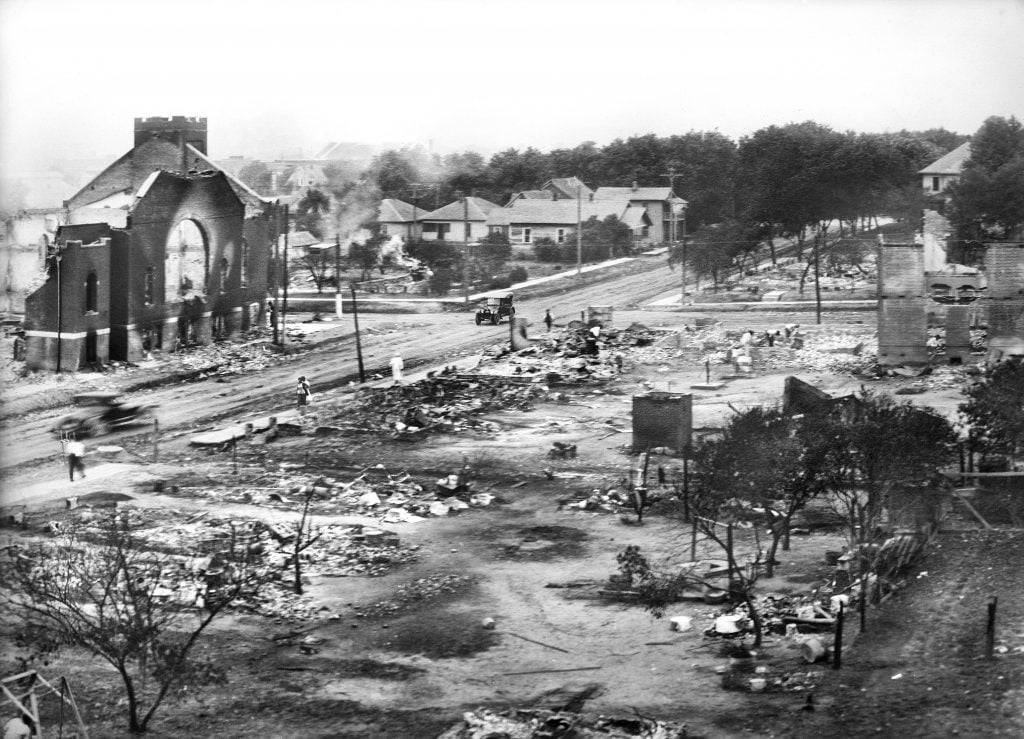
Part of Greenwood District burned in Race Riots, Tulsa. American National Red Cross Photograph Collection, June 1921. Photo by GHI/Universal History Archive/Universal Images Group via Getty Images.
The project is funded by Bloomberg Philanthropies, which awarded Tulsa one of its $1 million Public Art Challenge grants for artworks addressing civic issues.
Perhaps the best-known name in the exhibition is Oklahoma City native Tatyana Fazlalizadeh, of the “Stop Telling Women to Smile” street art series. The artist, who is Black and Iranian, is staging a three-night site-specific installation, titled The Day Is Past and Gone, at a historic Tulsa church.
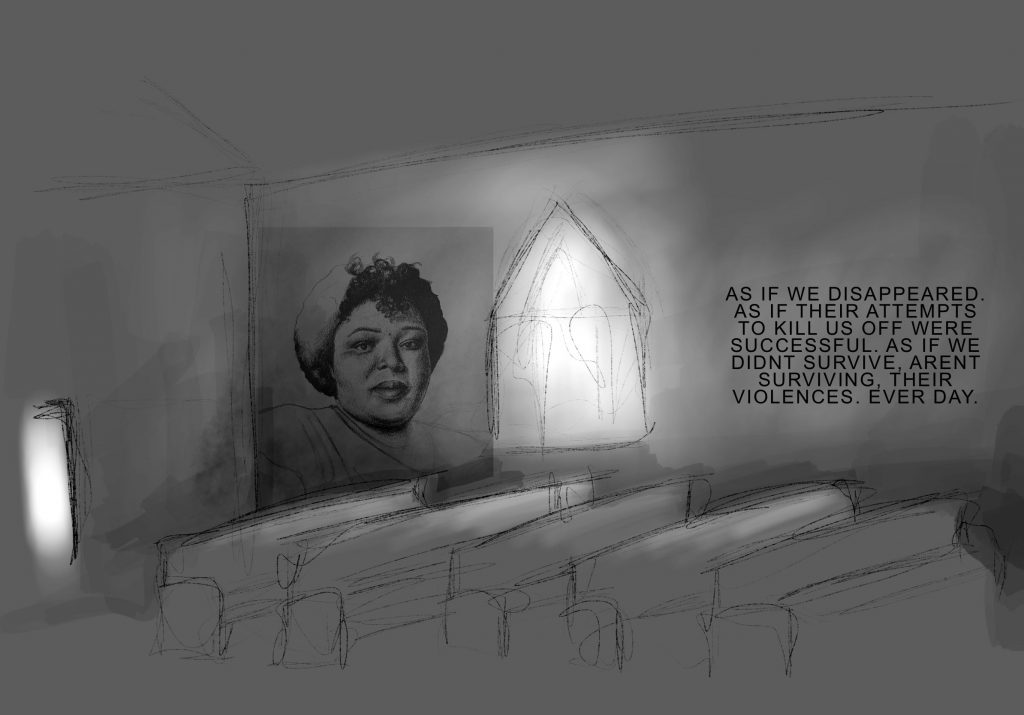
Tatyana Fazlalizadeh, The day is past and gone. Courtesy of the Greenwood Art Project.
“My work is about how Black folk experience the public space. And in this installation, the church building acts as both a site of safety and fellowship, as well as a site for racist violence,” Fazlalizadeh said in a statement. “This artwork is a departure from the type of media I usually use, and experiments with audio and visual elements to make an immersive experience for the viewers.”
Other projects include a dance reenacting the massacre’s inciting incident, an encounter between a Black man and a white woman in an elevator, and a refugee tent that recalls the Red Cross encampments that housed displaced Greenwood residents following the massacre.
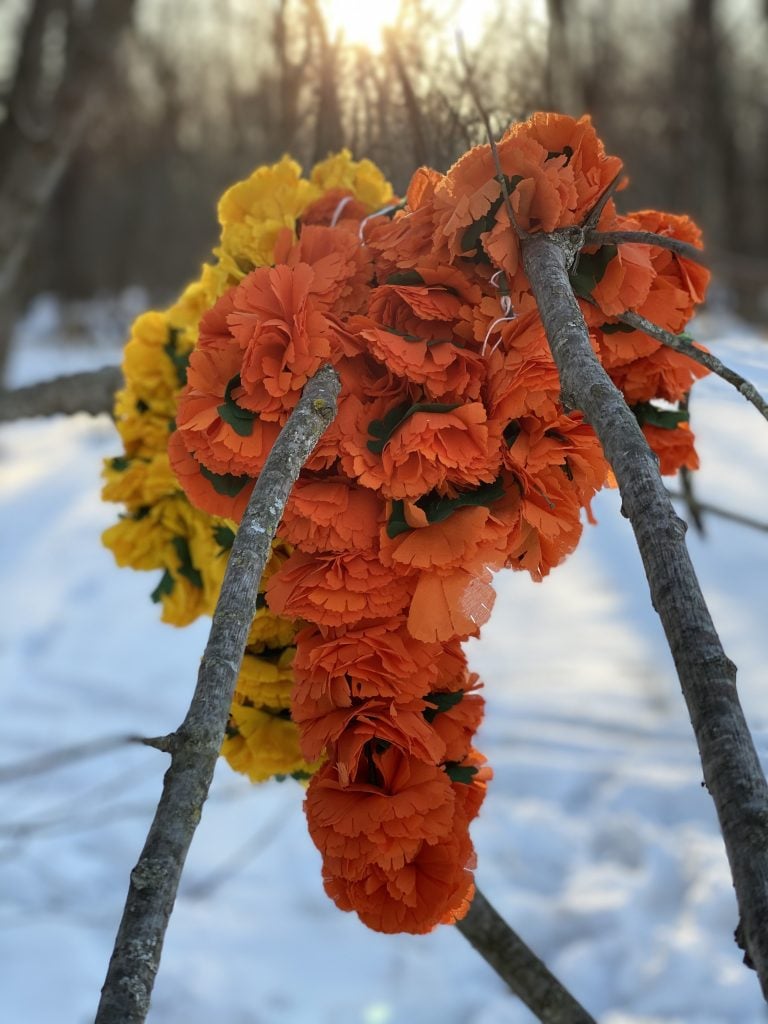
Sarah Ahmad, The American Dream. Photo by Marlon Hall, courtesy of the Greenwood Art Project.
The tent, by sculptor Sarah Ahmad, is adorned with orange marigold flowers made by craftswomen from her native Pakistan and requires a two-mile walk through the grounds of the Oxley Nature Center to see it. Visitors are invited to bring their own flowers to add to the display in tribute to the victims from a century ago.
Though the Greenwood Art Project officially launches today, some events have already taken place, while others will be staged at various times during the coming months.
On July 30 and 31, Ray Pearcey will present an experimental three-act play titled Citizen Brady “Catches a Charge,” in which a random selection of audience members will form a jury that judges local business leader W. Tate Brady for his role in instigating the massacre. The actors will also include real lawyers making the case for and against Brady.
This fall, writer and poet Candace G. Wiley will release a virtual “Choose Your Own Adventure” game, titled What If Tulsa: Story-Gaming App, where viewers can experience the events of the massacres from the perspective of six characters of different races, on September 30.
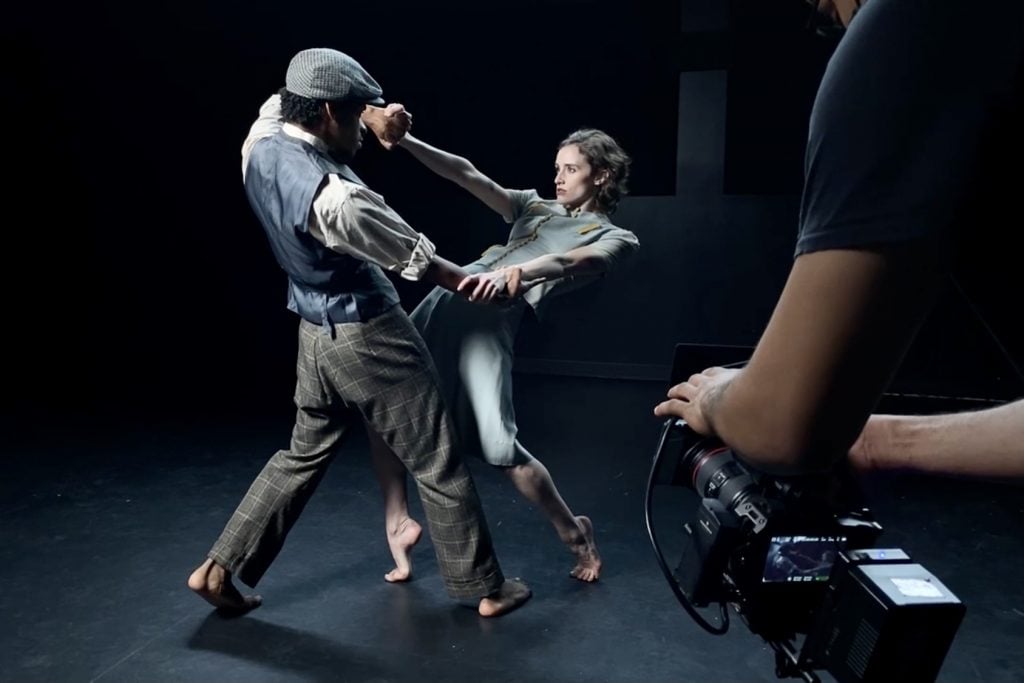
Ari Christopher, This Car Up. Photo by Air Christopher and the Tulsa Modern Movement, courtesy of the Greenwood Art Project.
There’s a reason so many of the projects aim to educate the viewer about what happened in Greenwood 100 years ago. It wasn’t until 2019 that Oklahoma public schools were required to included the massacre in their curriculum. But today, Tulsa finally appears ready to grapple with its dark history.
The Greenwood Art Project is just one of the many events and exhibitions taking place around the city. At the Gilcrease Museum, the Black Wall Street Legacy Festival is staging an installation from Storyfile (on view May 28–July 4) that employs artificial intelligence to stage “conversations” between visitors and two of the three last known massacre survivors, Viola “Mother” Fletcher, age 107, and Lessie Benningfield Randle, age 106.
The museum will also host “In Remembrance: Lynching In America: The Tulsa Community Remembrance Project” from the Equal Justice Initiative and Tulsa Community Remembrance Coalition, featuring jars of dirt from every known lynching site in Tulsa.
Across town at the Philbrook Museum of Art, there are not one but two Greenwood-inspired exhibitions, both on view through September 5. “From the Limitations of Now” takes its title from and is inspired by a speech by Ralph Ellison. It features contemporary work by artists from Tulsa and around the country, with a gallery based on Oklahoma poet Quraysh Ali Lansana’s book about the massacre. “Views of Greenwood” includes three photographer’s images of the neighborhood over the last 50 years, documenting its struggles and successes.